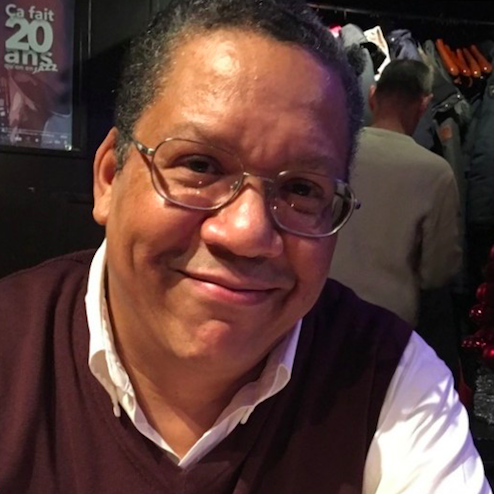
A global economy transitioning from traditional fossil fuel-based industries to renewables, the need to build 13,000 buildings a day to meet global demand, and growing labor shortages in the construction and manufacturing sectors sounds like a recipe for chaos. However, it also presents growing opportunities to uplift communities sorely in need of renewal through inclusive hiring in the burgeoning clean tech sector, which is estimated to generate millions of jobs by the end of the decade.
To assist their customers and communities in identifying those opportunities and encouraging more equitable pathways into emerging clean tech jobs, the Autodesk Foundation, the philanthropic arm of the multinational software corporation Autodesk, has joined with organizations including LinkedIn and Workday for a cross-industry coalition, the Just Transition Collaborative.
Facilitated by the social impact company NationSwell, the Just Transition Collaborative focuses on communities and regions most impacted by the shift from traditional fossil fuel to sustainable industries, explained Kate McElligott-Buchanan, head of Autodesk’s “Future of Work” practice, in a recent article her company published on its web site.
“The effort is guided by the concept of just transition: the notion that no one is left behind in the transition to a green economy,” wrote McElligott-Buchanan.
Bottom line, the anticipated surge in demand for these clean tech jobs will require companies to embrace more inclusive hiring.
New demands for new jobs in a new economy
The International Labor Organization estimates 24 million jobs could be created by the global clean tech sector by 2030 across a wide range of industries, including renewables, of course, but also in industries such as finance and transportation.
In the U.S alone, as many as 2.1 million manufacturing jobs might go unfilled by 2030, and in the construction industry, there could be as many as 200 million unfilled jobs globally by the end of the decade. The statistics do not account for new demands for workers in manufacturing and construction roles involving renewables and energy-efficient technologies, where additional investments could create up to 10 million more jobs across the world, McElligott-Buchanan explained.
Globally, the construction sector represents 39 percent of energy- and process-related emissions, with 28 percent of emissions coming from operational energy consumption and 11 percent from producing building materials such as cement, metal and glass.
“This is a real challenge when you consider that to keep pace with the growing urbanization of the global population over the next 30 years, the construction industry will need to build an average of 13,000 buildings every day to keep up with demand,” said McElligott-Buchanan.
Meeting that demand while lowering the construction industry’s carbon footprint will require revolutionary changes in building techniques and materials.
Can the building industry get anywhere close to net-zero?
Three years ago, the World Green Building Council, with the support of 80 organizations, issued a report describing several actions to move the construction sector towards a net zero future, through the elimination of both operational and embodied carbon emissions. These actions could result in the construction industry cutting less embodied carbon emissions by 40 percent by 2030 and achieve 100 percent net zero emissions buildings by 2050.
Manufacturing uses about one-third of the world’s energy. Reducing waste and water usage, adjusting energy loads, and tapping into renewable resources can give factories of the future the potential to become part of a global green economy while they reduce costs, McElligott-Buchanan said — but only if industry professionals are prepared to take on new and more sustainable approaches toward manufacturing.
Autodesk’s business model is dependent on the future of industries such as manufacturing, added McElligott-Buchanan. “Construction and manufacturing, two key industries we serve, face challenges in reducing their carbon footprint while meeting the increasing demand for qualified workers in a dynamic labor market,” she wrote.
Inclusive hiring is needed from the clean tech sector
The confluence of moving towards clean energy, increased demand for housing and labor shortages give an opportunity to close gaps in hiring practices are the U.S., noted McElligott-Buchanan.
With investment from the Autodesk Foundation, the Just Transition Collaboration examined existing hiring approaches in order to find ways to promote more inclusive practices in industries that could create thousands of middle-skill clean tech jobs. The partnership researched key roles and workforce development practices in industries that are generating middle-skill green jobs such as manufacturing, clean energy (particularly solar power and electric vehicles) as well as environmental, social and governance (ESG) compliance.
The Just Transition Collaboration spoke with stakeholders in Indigenous, Appalachian and Midwestern communities that have the most to gain from such new career opportunities, added McElligott-Buchanan. The outreach was also important to understand how jobseekers are affected by these ongoing economic changes and find new ways in which the clean tech sector can do its part to accelerate inclusive hiring.
The research provided additional insight that can have an impact on the Autodesk Foundation’s investment strategy and thereby create meaningful change within communities that Autodesk serves, said McElligott-Buchanan. For example, the paths into mid-skilled sustainability jobs are obscure and often include many barriers to entry, such as the need for academic qualifications or expensive credentials. Employers seeking to fill such roles tend to seek and value on-the-job experience; to that end, they often will not hire entry-level talent who lack at least five years of experience. Finally, a key barrier to inclusive hiring within these new careers is the lack of any understanding that acknowledges a prospective employee’s life circumstances.
“Reducing barriers to entry, investing in early career talent, and providing wellbeing services for employees, all play a role in bridging the gap for diverse workers,” said McElligott-Buchanan. “And while this supports green workers, it’s good practice for all workers.”
Image credit: Los Muertos Crew/Pixabay

Gary E. Frank is a writer with more than 30 years of experience encompassing journalism, marketing, media relations, speech writing, university communications and corporate communications.














